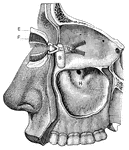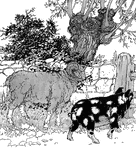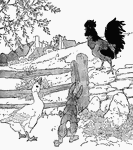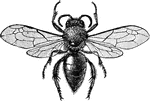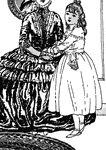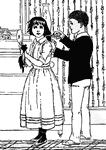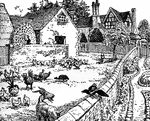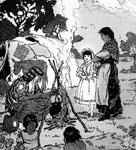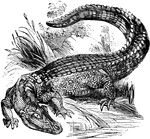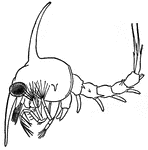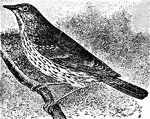
Song Thrush
"Thrush, in ornithology, is the name for any of the Turdidæ. They are universally distributed,…

Trichina Spiralis
"Trichina Spiralis is the name given to a peculiar nematoid worm which inhabits the muscles, usually…

Trichina Spiralis
"Trichina Spiralis is the name given to a peculiar nematoid worm which inhabits the muscles, usually…

Skeleton of Turtle
"Turtle is, in zoology, the popular name for any species of the Cheloniidæ. They may be distinguished…
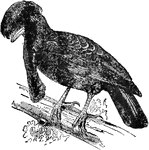
Umbrellabird
"The Umbrella Bird is a native of Peru. It is about the size of a crow, with deep black plumage; the…
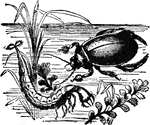
Water Beetle
"Water Beetles are beetles which live on or in the water. The Dytiscus, common in stagnant water, is…

Green Woodpecker
"Woodpecker is the popular name of the old Linnæan genus Picus, now greatly divided. Woodpeckers…
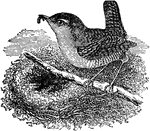
Wren
"Wren is a genus of birds, having a slender, slightly curved, and pointed bill; the wings very short…

Tree-coral
"These animals are generally called Tree-corals, on account of the forms of the polypidons…

Lizard
"Lizard is the popular name of numerous reptiles having usually two pairs of limbs and an elongated…

Surface of a nail
"Concave or Adherent Surface of the Nail. A, border of the root; B, whitish portion…

Egyptian Water Lily
"Lotus is a name given to various flowers, including several beautiful species of water lily, especially…
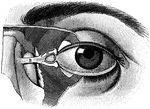
Eyeball
"The Relative Position of the Lachrymal Apparatus, the Eyeball, and the Eyelids. A, lachrymal canals,…
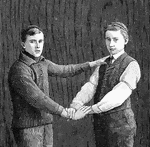
Hand seat
"Improvised Hand Seats: the Three-Handed Seat. THe usefull three-handed seat is made by one bearer grasping…
Pastoral Staff
"The Pastoral Staff is, in the Roman Catholic Church, the official staff of a bishop or abbot. The pastoral…

Pompeiian House
"House construction consists mainly of concrete or brick, and sometimes of stone blocks, especially…

Shoe-Billed Stork
The Shoe-Billed Stork is a bird related to the Storks that feeds on creatures that live in muddy water.

Spoonbill
"Spoonbill is the popular name of the birds of the genus Platalea, belonging to the heron family (Ardeidæ),…
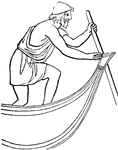
Exomis
"A dress which had only a sleeve for the left arm, leaving the right with the shoulder ad a part of…
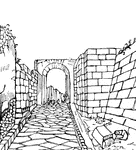
Pompeii
"The following cut gives a view of of a portion of the paved street at the entrance of Pompeii. The…

Emperor Meiji
Emperor Meiji (November 3, 1852 – July 30, 1912), or Meiji the Great, was the 122nd Emperor of Japan…
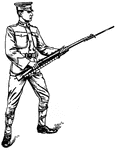
Bayonet Guard
"At the second command sake the position of guard; at the same time throw the rifle smartly to the front,…

Chivalry and knight-errantry
"The chivalry of the gothic nations began in the woods of Germany. No youth was then permitted to assume…
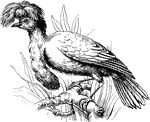
Umbrellabird
"The Umbrella Bird is a native of Peru. It is about the size of a crow, with deep black plumage; the…

Tourniquet
Hydraulic tourniquet, also called Barker's mill. It consists of a vessel of water free to rotate about…

Section of skin
"A block out of the skin. a, dead part and d live part of the epidermis; e, sweat glands; n, nerve endings."…
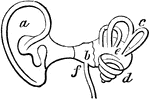
Ear
Interior of the ear. There is external to the head a wide-mouthed tube, or ear-trumpet (a), for catching…
Scorpion or Spider
Chinese, viciousness, poison. In India it is believed that if a scorpion creeps over the body it causes…
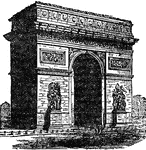
Arch of Triumph
A structure in the shape of a monumental archway, usually built to celebrate a victory in war. The arch…
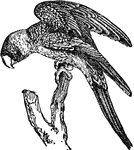
Parrot
A genus of tropical birds classes with the climbers. The genus includes many beautiful species, most…
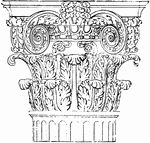
Composite capital
"The Composite or Roman order was the outcome of the attempt to improve the Corinthian, of which it…

Petrel
A genus of sea-birds. They include many species, all of which have webbed feet and long and strong wings.…

Quagga
The quagga is an extinct subspecies of the plains zebra, which was once found in great numbers in south…

Seal
The general name of certain genera of carnivorous mammals, havin feet adapted for swimming, and being…

Strawberry
A genus of plants extensively cultivated for their luscious fruit. They were so named from the practice…

Tortoise
A class of reptiles belonging to the same order as the turtles, but differing from them mainly in that…

Whale
The common name of animals belonging to the order cetacea, with which are included the porpoise and…

Bushmen
The peoples of South Africa and neighbouring Botswana and Namibia, who live in the Kalahari, are part…
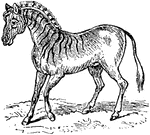
Quagga
The quagga is an extinct subspecies of the plains zebra, which was once found in great numbers in South…

Crocodile
Aquatic reptiles that live throughout the tropics in Africa, Asia, the Americas and Australia.

Platypus Skull
The platypus is a small, half-aquatic mammal endemic to the eastern part of Australia, and one of the…

Invasion of Kansas
This illustration shows the invasion of Kansas during the controversial period of time with free and…
Worms
This illustration shows a worm. Worms have an elongated soft-body. The most famous is the earthworm,…
